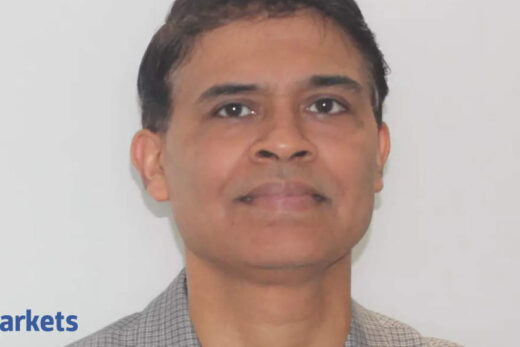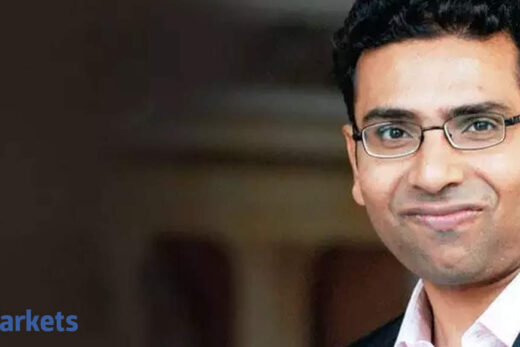Why are you so confident that this IPO is going to be a blockbuster?
We have done a lot of work over the last few years to build a solid company with the right fundamentals and the right offering to the customers which we see in terms of all the brand love that we get from our customers. A company like that will probably be better understood by the markets and hopefully we will enjoy similar delight amongst our market participants.
Nykaa is also different from the other internet tech companies that are going to Dalal Street in the sense that it is already profitable. The last comparable IPO was possibly Zomato. Now despite being profitable, why is Nykaa seeking a pretty similar valuation during IPO? Is it because maybe the markets are on a selloff mode?
I would like to talk about two-three principles. First of all as far as internet companies are concerned, profitability is a balance between customer acquisition and how you are seeing in terms of your customers who have acquired in the past, what kind of returning behaviour you have seen amongst the customers. As we have shared in our prospectus Nykaa has a proportion of 30% new customers and 70% of the business coming from returning customers who have bought from us during earlier periods and they are coming back to buy again.
It is this fine balance between acquiring new customers and returning customer that dictates the near term profitability in the long run. What the market is crediting various businesses for is the fact that as large as the markets are overall, whether beauty and personal care or even fashion, is a very big total addressable market in the country and as very small percentage of it is online right now. Just about 8% for beauty and 12% for fashion and the market believes this penetration of e-commerce is going to go up and that is why a lot of platforms which appealed to the consumer from buying online prospective are enjoying a good valuation.
Within that, whether it is food delivery or e-commerce or travel portals, each is catering to a very different addressable market and differ in the kind of penetration that they can achieve. In the long run, investors are going to look at the longer term prospects. So comparing somebody for being profitable, someone for being larger in size at a particular moment is not really of consequence. What matters is in the long run, what kind of journey many of these companies will experience.
With the price band of Rs 1,085-1,125 a share, have you left enough value on the table for investors post the IPO?
I used to be an investment banker. It was very important for us to make sure that we do not dictate the valuation and we truly are open minded about how institutional investors particularly those who come in through the anchor book and also beyond that bankers who will represent how retail and high net worth individuals will consider this particular offering work it out. So taking advice from all of them we have allowed them to tell us what would be the reasonable valuation and then made sure that we leave a reasonable amount on the table so that no investor ever feels that they did not get the right deal, should there be volatility in the market. If I get any advice from the corporate world, it will always be to make sure to leave enough value on the table for the new investors who are coming in.
Some believe that the peak bull cycle is behind us; some are saying no this is a super bull run. Does any of that concern you?
We have seen that in the private market there has been a lot of interest in many of the internet companies but from a public market point perspective, there are literally a couple of one or two IPOs that have gone ahead of us and what remains is a large number of deals that are likely to come to the market. So for the sake of the market, I do believe that the way investors see it as a multi-decade journey and I hope it turns out to be like that, with a really good experience for all shareholders who invest in the internet economy.
At any point in time, because investors like this space and they are ready to discount a lot more forward earnings, it may look like there is risk at the moment. But one has to take a much longer term perspective of how this sector and these companies will grow and what they can deliver in terms of offering to the consumers and how should that be valued. For example, even if you look at Nykaa, we are 9-year-old company. Today whether it is physical retail or e-commerce, the kind of offering one gives in terms of 4,000 brands and the platform, the number of SKUs on the platform and utmost ease with which consumer can transact across categories, across brands, across so many SKUs, all of that is being valued by investors.
The pandemic taught us that makeup cosmetic grooming business is recession proof. Going through the fine print, I see that not only have they bounced back, but one could have beaten pre Covid levels as well.
Yes, what was interesting is that in actually RHP, we have shared the quarter one FY2022 numbers which is basically April to June quarter, when we did have the phase two of Covid and there was a large human price to pay in certain cities. There were no nationwide lockdowns and because of that, we found that business continued very strongly. In fact, at an overall consolidated GMB level we have reported a $199 million GMP for the first quarter of this year and also we found that both fashion and beauty businesses do very strongly. If one looks at it year-on-year, the previous year April to June was a washout year. So we grew 9x and beauty we grew 178%.
But even if one were to ignore that comparison because it was actually a lockdown year, but even on a quarter-on-quarter basis, we have seen very strong growth of 12% in beauty and 43% in fashion. So we did have a blockbuster quarter. However, physical retail was a little bit subdued. It is doing better going ahead and it will do better as things open up.
If I were to look at the strong growth that you have seen in the quarter that you talked about and you have declared in the Red Herring prospectus, what would have been the main growth levers in Q1 and Q2?
Nykaa had started doing more customer acquisition. Over the last year full year numbers are reflective of the first half where we were quite impacted by Covid and there were restrictions depending on essential, nonessential businesses. The first half of the last financial year was impacted by Covid because of which, the customer acquisitions were limited. While we picked up customer acquisition in the second half, we started feeling bolder earlier because supply chains were also better.
So it was a quarter driven by very strong customer acquisition momentum and we believe that we will continue to do that going forward. Along with that, we found that consumers were ready to come back and consume certain categories that they were not consuming during the lockdown. Makeup was such a category where we saw a big difference between Covid and non Covid consumption though other categories like personal care have been growing throughout. Businesses like fashion are mostly physical businesses. People buy more fashion in the store but I think more and more consumers are now comfortable buying fashion online. So many of those consumer behaviour changes are here to stay I believe.
Is the growth that you are seeing broad based or is it primarily coming back in the bigger towns?
No, in fact the other way round. The tier-2 and tier-3 are growing very rapidly, much faster than the tier-1 cities and in fact now even for Nykaa, almost 60% of our orders and consumption comes from tier-2 and tier-3 cities. Tier-1 cities, metro cities are just about 40% of our sales. That shows future proportion will be more in favour of the tier-2 and tier-3.



